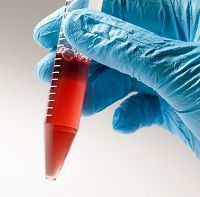Zinc Deficiency and Inflammation in Patients with HIV
Research indicates that serum zinc concentration appears to be inversely associated with serum C-reactive protein concentration, possibly contributing to chronic inflammation, in patients with HIV.

University of Massachusetts research indicates that serum zinc concentration appears to be inversely associated with serum C-reactive protein (CRP) concentration, possibly contributing to chronic inflammation, in patients with HIV. Published in the May 2016 issue of Biological Trace Element Research, the study is believed to be the first to explore the association between serum zinc levels and inflammation among patients with HIV while taking into account their anti-retroviral therapy (ART).
Led by Krishna C. Poudel, PhD, MHS, MA, MPA, an Associate Professor of Community Health Education in the School of Public Health and Health Sciences at UMass, the authors note that low zinc levels and chronic inflammation are both common among patients with HIV and that zinc deficiency may promote systemic inflammation. Furthermore, CRP is a biomarker of inflammation that has been shown to be associated with several parameters of HIV disease progression and the focus of extensive epidemiologic investigation, as it is an independent survival predictor as well, according to Poudel. But research on the role of zinc in inflammation among patients with HIV was lacking before their study.
“The fact that several studies have suggested that zinc might be something important for us to be aware of led us to analyze this micronutrient in HIV-positive patients,” said Poudel. “We hypothesized that lower concentrations of serum zinc would be associated with increased CRP concentrations in HIV-positive individuals, taking into account of ART.”
For the study, Poudel and colleagues in the College of Nursing at UMass conducted a cross-sectional survey of 311 patients with HIV (177 men, 134 women) aged 18 to 60 years who lived in Kathmandu, Nepal. Standard methods (latex agglutination nephelometry or turbidimetric method) were used to measure high-sensitive or regular serum CRP concentrations and to measure zinc concentrations (atomic absorption method). A questionnaire, in-person interviews, blood samples, and Indian food tables were used to estimate dietary zinc intake and CRP levels. Linear regression statistical analysis was used to assess relationships, and adjustments were made for demographic, lifestyle, and HIV-clinical factors.
The study team found that men and women had geometric mean zinc levels of 73.83 ug/dL and 71.93 ug/dL, respectively. Geometric means for CRP levels were 1.64 mg/L for men and 0.96 mg/L for women. As serum zinc concentrations increased in both genders, and among all age groups, CRP concentrations significantly decreased. “Mean serum CRP concentration was significantly decreased with increasing serum zinc concentration across zinc tertiles … with mean serum CRP concentration in the highest tertile of serum zinc concentration was 44.2 % lower than that in the lowest tertile,” wrote the study authors.
Poudel and colleagues said that their findings, if confirmed, could be a step toward intervention strategies for reducing inflammation and improving health and quality of life for patients with HIV, whether or not they receive ART. However, they indicated that more work is needed to determine whether zinc supplements might help to reduce inflammation. Prospective design studies are also needed to rule out the possibility that inflammation may influence zinc levels as opposed to zinc levels influencing inflammation.